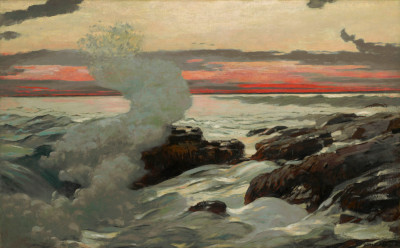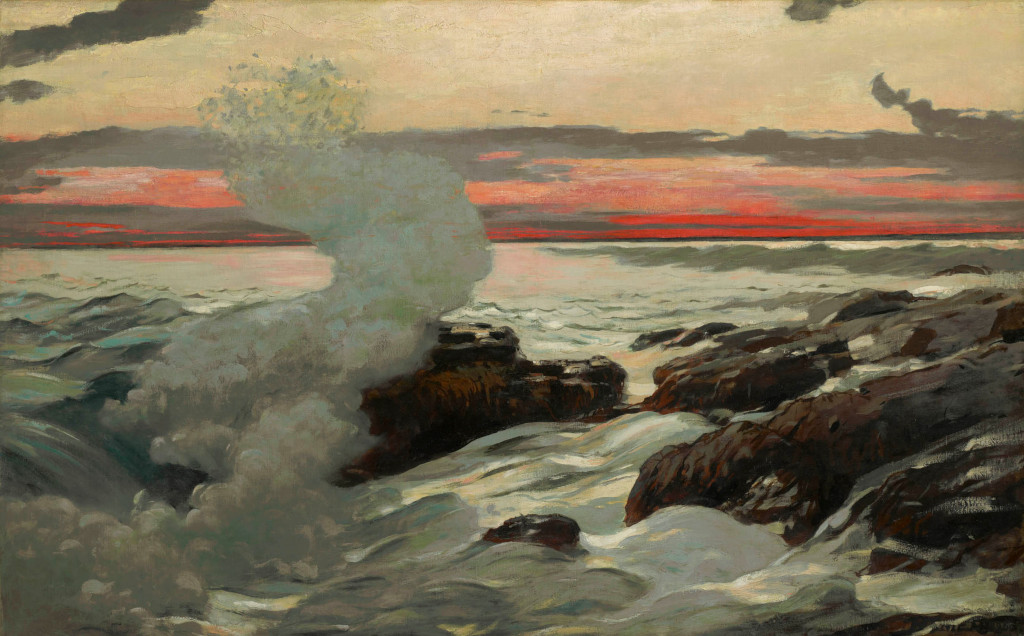This delightful seascape dates from the year 1900 and is one of many famous contributions made by American painter, Winslow Homer. West Point, Prout's Neck was produced entirely in oils, but the artist was also skilled in watercolours and as a draughtsman.
This piece features a spray of water flying into the air just in front of us. Behind that is a series of rocks which make up the shore line, and then an open expanse of water behind that. Across the horizon is a stunning display of red colour across the lower part of the sky, which immediately lifts the overall painting. There is then a small display of clouds elsewhere in the sky, but these are dispersed thinly around. The overall atmosphere of this painting is therefore fairly relaxed and calm, with just some small activity immediately in front of us. Homer was very experienced in seascape paintings, but the prominent use of red within this piece makes it a little different. West Point, Prout's Neck can today be found in the permanent collection of The Clark Art Institute which is based in Massachusetts, USA. As a prominent American painter who focused on his home nation within his work, there has been quite a clamour to acquire items from Homer's career and exhibitions of his oeuvre continue to appear across the country fairly regularly.
The artist later explained that he had spent several evenings, leading up to producing this artwork, sat along the Maine coast. He was trying to find the ideal moment at which to capture this environment. The region was relatively near to his art studio in Prouts Neck and by now he was highly familiar with the area. He remarked later that he considered West Point, Prout's Neck to be amongst his finest artworks, and it was the way in which he captured just the right moment, post-sunset, that appealed the most to him. Realism and accuracy was important to the artist, so long as his works did not end up being too refined and so he wanted to see the right sky scene in front of him, in person, rather than putting together an ideal scenario in his mind. The painting itself is 76.4cm in height, by 122.2 cm in width. This would be the normal format for any landscape or seascape painting, but Homer also experimented with long, narrow canvases for some contributions to these genres. The painting is believed to have been acquired by Sterling and Francine Clark in 1941, which explains its position today at The Clark Art Institute.
The precise location for where this red sky was viewed is believed to have been across Saco Bay to Old Orchard Beach. Having studied the same view for several days, Homer by now knew exactly the right moment to capture its intricate details. Whilst he did not follow in the footsteps of European artists too closely, there was a number of learnings from French art which might have influenced his in-depth study of this region. They would famously depict the impact of light over items right across the day, sometimes with series of paintings that showed the changes over time. Homer chose to study in a similar manner but just focus on one particular moment, which as he explained, was around 15 minutes after sunset. It was at this point that shadows started to form, and this mid-point within the transition offered something unique to his work. In line with the fondness that Homer held for this picture, he would request that it be put up for sale at $3,000, which in the very early 20th century was a considerable amount of money, even though he would lose one fifth of that to the dealer.





